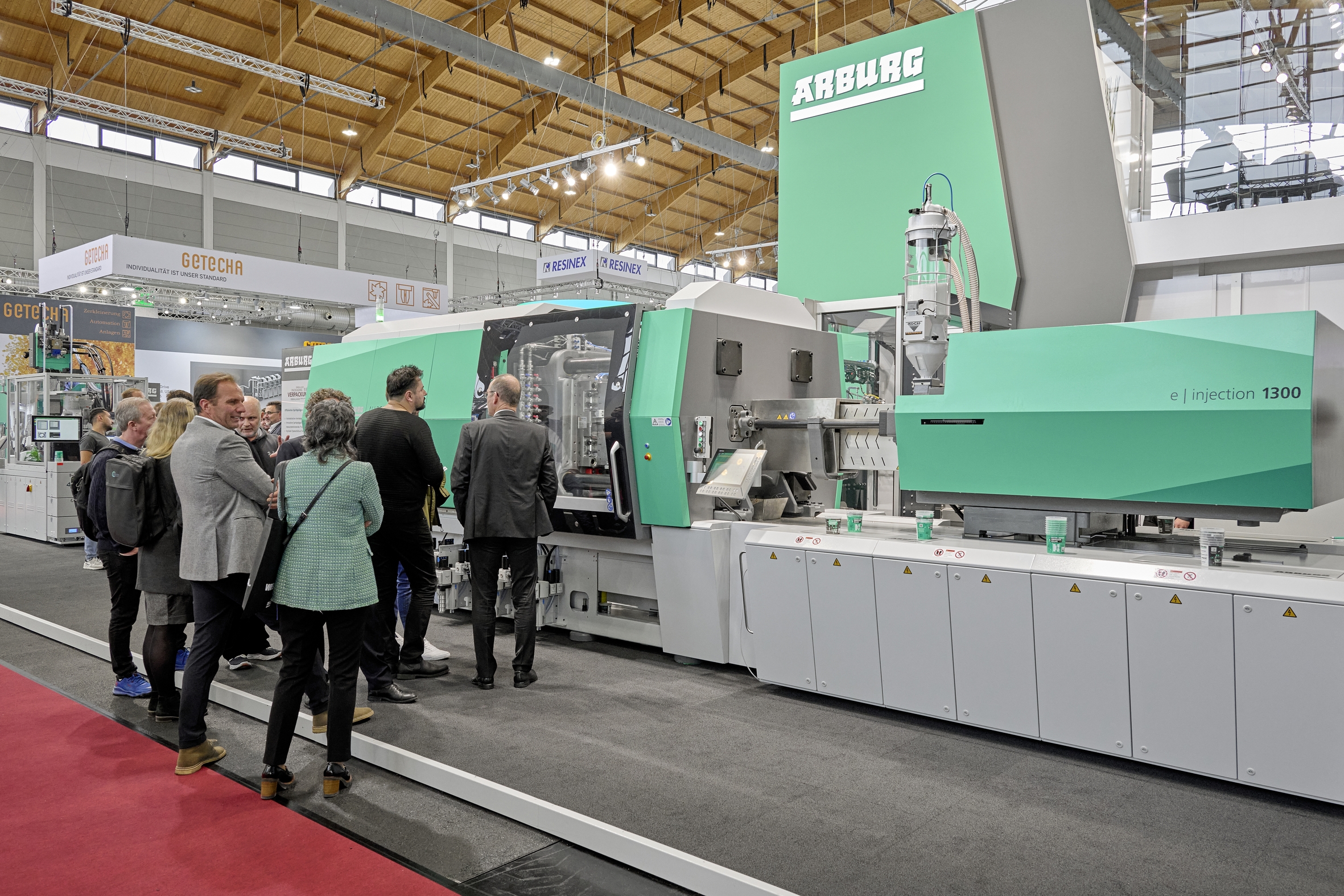IML cups only 0.015 inch (0.37 mm) thick
The exhibit uses a 4-cavity mold from Brink to produce thin-walled IML round cups from polypropylene (PP) using injection compression molding at an injection pressure of just 23,000 psi (1,600 bar). For process monitoring, the mold is equipped with six high-resolution inductive position measuring and embossing sensors. Four molded parts, each weighing 0.37 ounces (10.4 g) and with a wall thickness of only 0.015 inch (0.37 mm), are produced in a cycle time of 3.95 seconds. The plastic has a biomass footprint and ISCC-certified. Also integrated into the production cell is a side-entry robot from Brink that inserts the labels, removes the finished cups and stacks them on a conveyor belt.
